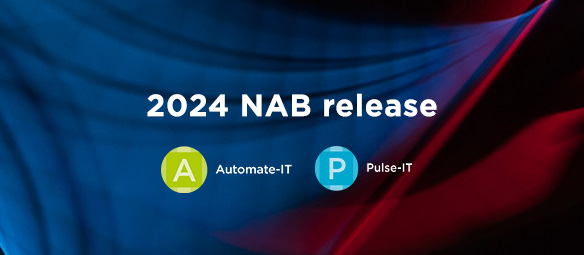
Low-code
Media organizations often struggle to deploy digital innovation in a practical, flexible, and scalable way. Too often, they end up with multiple standalone, short-term solutions with lengthy development cycles, high costs, and disappointing results.
When we founded Embrace, we strongly believed that designing our products with a low-code approach would benefit our customers hugely and our ecosystem of technology partners and resellers alike. This article intends to help you understand what low-code is all about and why it can contribute in helping your company succeed in its digital transformation journey.
Low-code and no-code are amongst the leading underlying trends in the software industry.
 What is low-code?
What is low-code?

Low-code is a software development approach that enables users to design workflows, automations, or integrations without the need for advanced programming skills.
Historically, software development was performed only by IT professionals.
With the acceleration of cloud adoption, the programming tasks needed to be simplified in order to allow operational teams to rapidly translate business requirements onto software platforms without having to purchase professional services from the vendors or IT firms.
In fact, software products can be designed in 3 ways:
- No-code: simply drag-and-drop existing blocks into the App to set up a program or an automation
- Low-code: similar to no code but allows for very fast custom actions design and modifications
- High-code: requires bespoke development to build any integration or workflow design
Don’t forget all options include some level of code.
Low-code is very quick and powerful!
 How does low-code work?
How does low-code work?

Low-code offers more flexibility and possibilities than no-code, and users benefit from a graphical approach to programming in comparison to high-code. In fact, low-code requires very little code to perform sophisticated business and technical tasks.
Pulse-IT, our media-oriented workflow orchestration platform comes with three types of blocks with code pre-built to design and test any kind of workflow in minutes!
- Tasks
- Forms
- Sequences
It’s extremely easy to build a program for non-IT specialists. Users can express and draw functional needs by leveraging existing models provided to them. Pulse-IT manages and hides all complex technical tasks related to executing these models such as multi-threading, error management, logs collection, callbacks, web hooks, supervision etc.
You are not limited to the vendors’ approach.
You are free to extend and adapt their solutions in a suitable manner that makes sense for you!
 Why low-code is probably the most effective way?
Why low-code is probably the most effective way?

Low-code will bring your digital transformation at scale leveraging your existing talents and business systems.
- No specific programming ressource needed
- All team members can use the solution
- Budget for integrations is predictable
- Simple repetitive tasks automation capabilities (e.g. files naming, media archiving…)
- System level tasks provided out-of-the-box (e.g. supervision, notifications,…)
- Massive productivity gains as Apps or projects are delivered much faster
Low-code enables digital transformation at scale, with faster development times, better customer experiences, higher ROI and greater agility.






